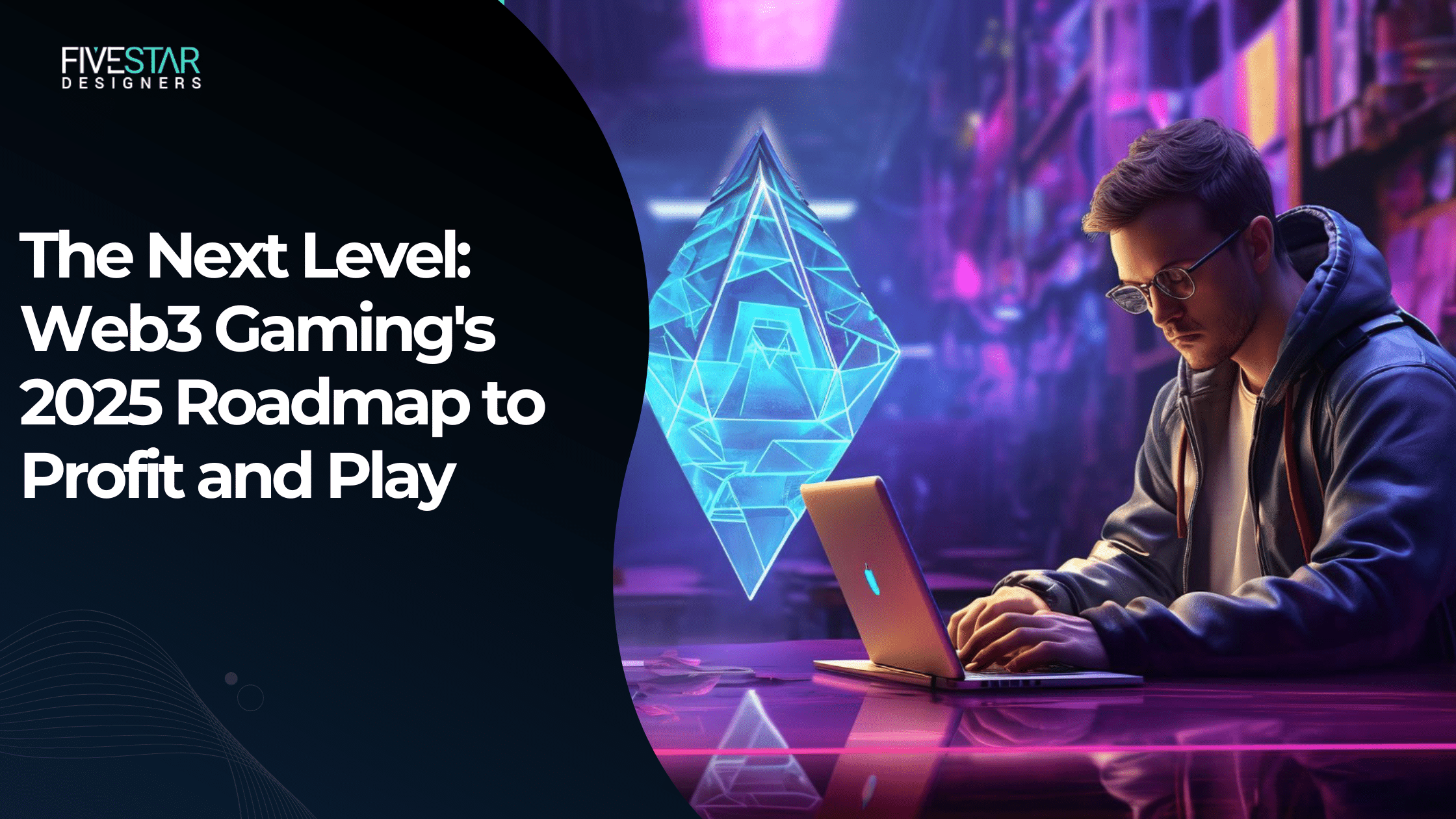Ever since 2017, the crypto rush has been growing exponentially, with multiple industries, including healthcare, finance, voting systems, real estate, and entertainment, embracing the trend.
Now in 2025, Web3 blockchain games dominate the mantle of hype with play-to-earn models, NFTs, and immersive experiences as investors, gamers, and innovators flock to this rapidly evolving space. However, mobile app development companies face novel challenges like consensus mechanics, off-chain scaling, and tokenomics, all while keeping a clean slate for the UX.
These seemingly daunting obstacles can be expertly maneuvered through by a specialized Web3 development company. Let’s see how!
Market Architecture Shifts
Layered Settlement And Interop Patterns
Blockchain games increasingly decouple settlement layers from execution layers. Developers migrate heavy state transitions onto rollups or sidechains while anchoring ownership via mainnet proofs. That split reduces gas friction and improves frame pacing during sessions.
Composable Asset Ownership
Composable ownership models permit nested provenance for in-game artifacts. This enables modular item crafting where a single NFT can reference subcomponents whose metadata evolves on-chain. Expect richer trade graphs and novel secondary-market liquidity, especially across NFT gaming platform protocols.
Practical Tradeoffs
- Latency implications during cross-chain hops
- Need for deterministic state reconciliation engines
- Custody UX that avoids repeated seed prompts
Gameplay Economics and Token Design
Holistic Tokenomic Engineering
Game-led token economies now model utility, burn sinks, and vesting schedules inside on-chain smart contracts plus off-chain oracles. Economists run Monte Carlo scenario analysis instead of relying on simple inflation assumptions. The result is more resilient incentive loops if governance actors act rationally.
Play-to-Earn Mechanics Revisited
Play-to-earn game development cost has two dominant vectors: economic engineering and regulatory compliance. The first demands simulations and a treasury design with buffer reserves. The second requires legal audits tailored to jurisdictions where token sale laws apply. Budgets must allot for both.
Budget Components
- Tokenomic modeling and simulation stacks
- Smart contract audit cycles and re-audits
- Legal advisory and jurisdictional filings
Tech Stack And Infra Considerations
Deterministic Simulation And Cheating Resistance
Competitive crypto-based games require deterministic simulation layers so that state proofs are verifiable across peers. Techniques like zk-rollup proofs for combat resolution or fraud proofs for marketplace settlements are gaining traction. These add engineering overhead but reduce trust assumptions.
State Sync And Eventual Consistency
Persisting off-chain inventories while syncing ownership with on-chain registries introduces eventual consistency hazards. Teams solve this using idempotent reconciliation services and event-sourced backends that can replay state until on-chain receipts confirm transitions.
Engineering Priorities
- Idempotent APIs that handle replays
- Event-sourcing coupled with cryptographic receipts
- Observability tooling for chain-to-app reconciliation
UX And Retention Strategies
Abstraction Of Crypto Complexity
Player retention hinges on seamless onboarding. Wallet abstraction layers, ephemeral custody, and single-click signatures now make entry frictionless. Designers combine progressive disclosure with guarded opt-ins for trading and secondary-market interactions.
Social Graphs And Guild Economies
Many best blockchain games 2025 will not just sell items. They will embed persistent social structures that capture attention through shared objectives and programmable revenue sharing. Guild tooling, revenue streams, and permissioned smart contracts become part of core retention playbooks.
Platform And Business Models
Hybrid Monetization Architectures
Successful projects stitch subscription tiers, curated marketplaces, and capped-supply collectibles into hybrid monetization stacks. Pure token play is less common than multi-revenue designs that stabilize balance sheets against speculative cycles.
White-Label Blockchain Gaming Solutions
Publishers seeking quicker time-to-market lean on modular blockchain gaming solutions that supply identity, custody, and marketplace primitives as SDKs. That reduces integration risk but introduces dependency on third-party security postures.
Integration Checklist
- Auditability of SDK contracts
- Upgradeability policies and governance controls
- Latency profiles under peak load
Cost Benchmarks And Resourcing
Typical Budget Ranges
A minimal viable crypto-based game with basic marketplace, wallet support, and light tokenomics often starts at an order of magnitude higher than native web games due to audit, legal, and infrastructure costs. Mid-tier productions that include deterministic servers, cross-chain bridging, and live economy monitoring commonly land inside enterprise budgeting envelopes.
Cost Drivers Explained
- Smart contract development and repeated audits
- Tokenomic research and economic stress testing
- Cross-chain bridge licensing and liquidity provisioning
- Continuous compliance and reporting obligations
Choosing The Right Launch Path
MVP Versus Full Economic Launch
Teams may ship a playtest with mocked economic flows to validate retention metrics prior to minting the circulating supply. That approach reduces systemic risk and lets market signals inform supply parameters. It also compresses upfront audit needs.
Ecosystem Partnerships
Selecting an NFT gaming platform partner can accelerate discovery and liquidity. Partnerships should be evaluated by on-chain activity, custodial options, and developer support ecosystems rather than hype alone.
Final Notes On Risk And Opportunity
Governance, Regulation, And Survivability
Token governance structures must be readable, upgradeable, and aligned with long-term equilibria. Regulation remains a moving target; conservative legal provisioning and transparent documentation improve survivability.
Where Value Will Accrue
If the in-game market economics remain non-volatile, we can expect the game currency to also remain valuable. Reducing cheating and promoting fair play, along with specialized protocols that clearly outline the cryptography, whilst being safe and transparent, also play a crucial part.
Web3 development not only consists of technological complexity, but drags in the economic sciences, making the creation of such apps require finesse and expert mastery, which is why opting for a hardened veteran blockchain game development company for your project is a must.
So what are you waiting for? Book a free consultation session with 5StarDesigners and envision your idea among the next wave of standout titles among the best blockchain games 2025.
FAQs
What are the top emerging trends in Web3 game development for 2025?
The top trends are the shift from P2E to play-to-own models, integration of AI-powered content and NPCs, the rise of AAA titles, and prioritizing seamless, non-crypto-centric user experiences.
What is the estimated financial cost to develop a full Web3 game?
Developing an MVP costs roughly $30K to $150K, and a full-featured game can range from $250K to $600K, depending on complexity, features, and team location.
What are the crucial steps for creating a successful blockchain game similar to Axie Infinity?
Key steps include designing a sustainable dual-tokenomics model, developing unique NFT creatures with utility (battling/breeding), and integrating secure smart contracts for the marketplace and ownership.
What is the projected growth and future outlook for the Web3 gaming industry?
The industry is projected to reach over $90 billion by 2030, driven by mainstream adoption, investment in GameFi, Layer-2 scaling solutions, and the entry of major traditional gaming studios.




